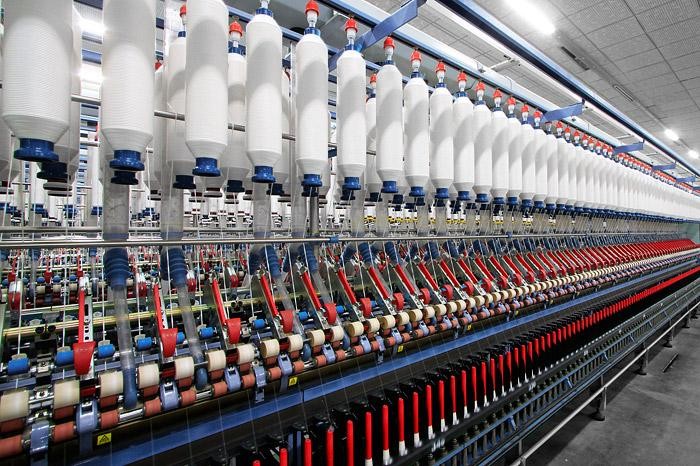Global 3D-Printed Sustainable Housing market size was USD 55.02 million in 2023 and the market is projected to touch USD 2,281.64 million by 2032, at a CAGR of 59.3 % during the forecast period. The sustainable 3D housing market refers to utilizing 3D printing technology for eco-friendly and resource-efficient homes. The technological innovations used in this modern approach of building see automated machines layering materials like concrete, plastic or other composite substances into specific forms hence reducing waste, labour costs and construction durations. Sustainable housing aims to minimize impact of residential houses on the environment by adoption of renewable materials, energy conserving systems as well as designs that have a low carbon footprint. The convergence of these two ideas-3D printing and sustainability have brought about low-cost solutions for housing in regions experiencing scarcity of houses or natural calamities. The market is also experiencing rapid growth since it provides answers to pressing problems such as urbanization living expenses and ecological degradation.
The 3D-Printed Sustainable Housing Market has been boosted by a number of factors, including rising needs for low-cost housing, the desire to reduce construction waste as well as advances in 3D printing technology. In order to deal with the global housing crisis currently facing the developing countries that have slow and costly traditional building methods, both government and private organisations are helping this market. In addition, another factor that is contributing to the fast growth of this sector is custom-made designs, local material usage and shortening of building time through modern technology. But this industrial segment also faces challenges such as legislation from governments, high start-up costs of 3D printing technology and a lack of skilled workers.
Click: https://www.organicmarketresearch.com/global-3d-printed-sustainable-housing-market
Countries Covered
U.S., Canada, Mexico, U.K., Germany, France, Italy, Spain, China, India, Japan, South Korea, Australia, Brazil, Argentina, GCC Countries, and South Africa, among others.
3D-Printed Sustainable Housing dynamics
Market dynamics of the Global 3D Printed Sustainable Housing Market are shaped by a blend of drivers, restraints and opportunities. A major driver is increasing need for affordable & sustainable housing in regions facing rapid urbanization & housing shortage. Efficiency of 3D printing technology which leads to lower costs & shorter construction times is in line with these demands. In addition, increasing focus on sustainability and green building practices is driving acceptance of 3D printed homes. These initiatives are being supported more than ever before by governments as well as private organizations through funds and regulations that promote the development of this sector.
Nevertheless, the market encounters numerous obstacles. One of them includes the high upfront expenses that come with 3D printing technology coupled with the necessity for qualified personnel which act as huge impediments towards universal acceptance. Also, regulatory issues complicate deploying these technologies region wise since building regulations and standards always tend to trail behind advancements in technology. These challenges there exist numerous possibilities for growth it is possible to utilize materials that are sourced locally and there is also quick provision of houses especially in areas prone to disasters or underprivileged areas. Besides, constant improvements in 3D printing techniques will eventually reduce costs while enhancing scalability hence making 3D printed affordable greenhouses available to more markets around the world.
3D-Printed Sustainable Housing drivers
Growing Demand for Affordable Housing
The 3D-Printed Sustainable Housing Market is being driven by the growing need for cheap housing. This is exacerbated by fast growing cities and urban centers, particularly in underdeveloped countries whereby the disparity between demand and supply of houses widens. Slow and expensive traditional building methods often make it impossible to meet the rising need for affordable houses. However, 3D printing technology provides a quicker, cheaper way of building houses than conventional approaches hence saving both time and resources used in constructing homes. Moreover, this technology makes long-lasting and inexpensive houses for poor people helping alleviate world housing problem efficiently.
Emphasis on Sustainability
Another principal force for the market is the global movement towards sustainability. There’s an increase in demand to construct buildings that are friendly to our environment due to climate change fears and other environmental issues. 3D printed homes exemplify this trend by minimizing waste, reducing carbon footprints as well as using recycled materials or renewable ones. Moreover, they can also be designed with energy-efficient systems which makes them more attractive on the market today. More so, governments and institutions have placed more emphasis on sustainable constructions thus there is a rise in acceptance of 3D printed houses since these solutions give practical methods of diminishing negative effects of new constructions on nature.
- Restraints:
Limited Skilled Workforce
Major constraint on that global 3D printed sustainable homes market remains to be the insufficiency of trained personnel .The technology utilized for 3D printing in construction still belongs to its infancy stage, as specialized knowledge in operating the machines, programming the designs and managing materials play key roles during such process .There are few people who have those skills who are able to work with 3D printing device meaning that such technology area can be delayed somehow or there could be more operational hindrances. So, in response some training programs or educational initiatives were introduced over time but still, it is difficult to increase the number of skilled workers as there’s big skill gap for them at this moment especially within less advanced areas regarding building sector.
Regulatory Hurdles
The practical constraints on this market have been adequately addressed through regulation. In different societies around the world, for instance, many building codes and standards still do not support 3D printing structures hence making it difficult for approval and construction of such homes. Regulation review can be subject to slow process. In some cases, there could also be opposition from local governments or even neighbourhoods that are not used to 3D printed houses. Consequently, delays and costs will arise to impede the growth of this market while policy barriers inhibit the wider use of 3D printed housing solutions.
- Opportunities:
Expansion into Disaster-Prone and Underserved Areas
In disaster-prone and underserved areas, the rapid construction of durable yet affordable homes present immense possibilities. In regions affected by natural calamities, 3D-printed houses can be quickly dispatched to give people a place to stay while they are recovering. Likewise, in underprivileged locations where conventional building practices take too long or cannot be done, 3D printing comes as a viable substitute. This opens up an opportunity for vast expansion into markets that have an ever-increasing urgent need for housing and which at once addresses both short term requirements as well as dealing with future sustainability issues.
- Segment Overview
By End-User, the 3D-Printed Sustainable Housing Market is segmented into commercial, residential, and industrial sectors, each with unique demands and applications. For building office spaces, retail outlets, and public infrastructure, 3D-printed construction is rapidly becoming well known in the business world because of its ability to save on time and cost while at the same time providing room for customization. It is particularly attractive to companies eager to build green buildings in line with their sustainability objectives. The residential industry is probably the largest segment flowing from a rising need for cheap and eco-friendly housing alternatives particularly in urban regions. With 3D technology it becomes easier to have durable energy saving houses built at a fast pace thus pulling interests from both developers and homeowners. Large scale constructions such as warehouses, manufacturing plants among others utilize 3D printing in the manufacturing industry mostly.
By Material Type, the market is segmented into plastic, metal, concrete, and other materials, each offering distinct advantages and challenges in 3D-printed construction. The construction materials which 3D-printed houses use most frequently are all concrete, appreciated due to its strength, durability and versatility. It is especially efficient at making building structural parts like walls or bases. While less typical, plastic products go into smaller elements’ production or elastic light constructions. The sustainability element of 3D-printed homes come from their recycle-ability. High durability needs and specifics lead primarily to use of metal in industries or unique properties like high accuracy. In spite of this being costly however long-lasting metal alloys instances can also fit with complex patterns.
3D-Printed Sustainable Housing Overview by Region
Strong technological advancements, high demand for sustainable construction and substantial investments in 3D printing technology are key factors that have made North America a leading region. In particular, The U.S. is at the forefront with many pilot programs helping to stimulate the pace of market adoption with government support. Europe is also closing in on North America with some countries like Netherlands, Germany and UK making active attempts toward exploring housing solutions, through 3D printed houses, for urban housing shortages as well as dealing with environmental concerns at hand. Besides North America and Europe, another major market emerging is Asia Pacific particularly in rapidly urbanizing countries such as China and India where affordable housing needs are vital. To deal with this need governments here are increasingly investing in technology related to 3D printing so that they can remedy shortages in houses along with promoting efficiency during construction. In addition to those areas mentioned above some regions including Latin America and Middle East have become increasingly focused on it, especially in locations that are prone to natural disasters where speedy homes from 3D prints can serve as an effective and resistant solution.
3D-Printed Sustainable Housing market competitive landscape
Key players include ICON (U.S.), COBOD International (Denmark), and Apis Cor (U.S.), all of which are at the forefront of developing advanced 3D printing technologies for construction. All these companies put so much to R&D so that they could improve on their printing skills, raw materials and designing software for printing. Also, there are often alliances between construction companies with technology ones in order to enhance the use of adoptions of 3D-printed homes. This is particularly true for new entrants into this field or small businesses that operate mainly within niche markets or specialized products thus generating innovations in the sector. The competition scenario can be described as developing since it’s still quite in its infancy but has many prospects regarding growth and partnerships. This is not without increasing rivalry due to increasing number of enterprises that are embracing 3D printed eco houses hence quickening technological progression which results into a scramble for international markets.
Contact Us:
Mob : +91 9319642100
Noida One Tower Sec 62 Noida 201301
Sales : sales@organicmarketresearch.com
Website : https://www.organicmarketresearch.com















